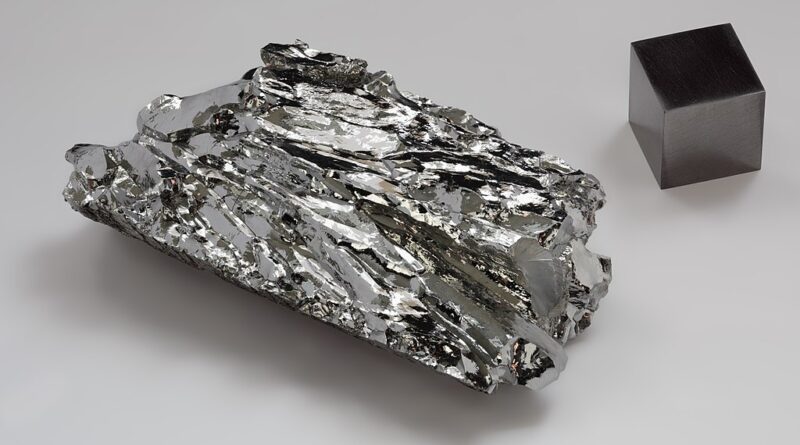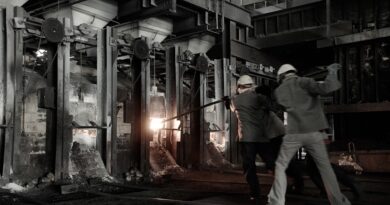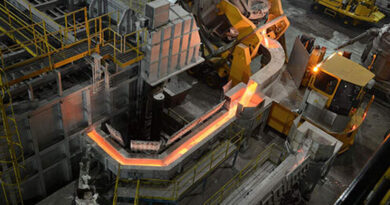Australia ranks the world’s third largest producer of cobalt
Australia is the world’s third largest producer of cobalt, although its current output pales before that of the DRC’s, and we expect a strong project pipeline to raise the country’s market share of global cobalt production in the coming years.
In 2020, Australia produced 4.0% of the world’s cobalt concentrates (5.7kt). However, the country holds the world’s second largest cobalt resources, at 19% of total, implying much room for production growth over the coming years.
Australia’s mined cobalt is typically a by-product of nickel laterite resources, while refined cobalt is currently exclusively in the form of cobalt metal. Australia currently produces no refined cobalt chemicals, after production ceased in 2015 with the closure of the Palmer Nickel and Cobalt Refinery (Queensland Nickel). However, most of the new integrated projects in Australia aim to produce cobalt chemicals for the battery industry.
Mine Production:
- Glencore is a major producer of cobalt concentrates in Australia, through its Murrin Murrin nickel-cobalt mine, that accounted for more than 50% of Australian cobalt concentrate production in 2020.
- BHP, First Quantum Minerals Ltd and IGO Ltd are the remaining three out of four cobalt producing companies in Australia that are currently operational.
- In early 2021, Panoramic Resources Ltd announced the restart of the Savannah Nickel Operation, which is expected to have an annual production target of 676 tonnes of cobalt, with first shipments expected from December 2021.
Intermediate Processing And Refining:
- Currently, Glencore is the only company producing refined cobalt in Australia, in the form of cobalt metal.
- However, a number of integrated projects are in the pipeline, the most recent announcement being POSCO and First Quantum’s plans to produce a ‘battery precursor’ of mixed nickel-cobalt hydoxide. Production is expected by 2024.
- Of the most promising integrated projects in the pipeline, that aim to cater to the battery industry, Sunrise Energy Metals‘ Sunrise project is one. Designed as an integrated facility, the project is in pre-construction stage and slated to produce 21.3ktpa of cobalt sulfate once operational amongst other minerals.
- Cobalt Blue Holding‘s Broken Hill Project is another integrated project. The Broken Hill Cobalt Project includes the development of an open-cut mining operation, downstream ore processing and a refinery to produce 3.5ktpa of cobalt sulfate once operational. It is currently in the feasibility stage that is slated to complete by the end of 2022-2023.
- Additionally, Ardea Resources Limited‘s Goongarrie Nickel Cobalt Project (GNCP) is also promising, with world-class supporting infrastructure in the well-established Kalgoorlie mining district. The GNCP will produce 10ktpa of cobalt once operational, and is currently in the feasibility stage.
- Adding to this, Australia Mines Limited‘s SCONI project, which has recently entered the construction phase at its pilot production plant, has already bagged a six-year agreement with South Korea’s LG Energy Solution to provide nickel and cobalt starting from the end of 2024.
In summary, Australia is well positioned to benefit from the battery revolution with a strong cobalt project pipeline and a strong government focus on critical minerals to increase the attractiveness of Australia’s mining regulatory environment.
In January 2020, the federal government established the Critical Minerals Facilitation Office to further aid in the growth of Australia’s critical minerals sector by coordinating a national strategy.
Moreover, the government has prioritized creating a supportive mining policy environment through state agencies Austrade and Export Finance Australia (EFA), as well as USD32.7mn in grants issued to the country’s cooperative research centres projects. Austrade helps facilitate international investment and offtake agreements for domestic projects, while the EFA offers a credit facility for critical minerals projects important for national defense.
Additionally, in the Fitch view, lower risks and increased sustainability initiatives will encourage a shift in investment from the DRC to Australia over the long term.
Indeed, Australia presents a much lower risk environment if the EU seeks to reduce its dependency on the DRC for cobalt. While the DRC possesses approximately three times as many cobalt reserves as Australia, miners operating there face considerably more risks. Australia is ranked third globally on the Fitch mining risk reward index (RRI), ranking significantly higher than the DRC which is positioned at 51.
For example, Australia receives a perfect score (100.0) in the Fitch mining regulation sub-score, contrasting with the DRC’s score of 7.4. Australia represents a bright investment spot for miners and off-taking firms seeking to avoid the human rights and environmental risks associated with cobalt mining in the DRC. Additionally, Australia’s mining regulation prioritises sustainable extractive processes which will prove appealing for countries with strong environmental standards.




